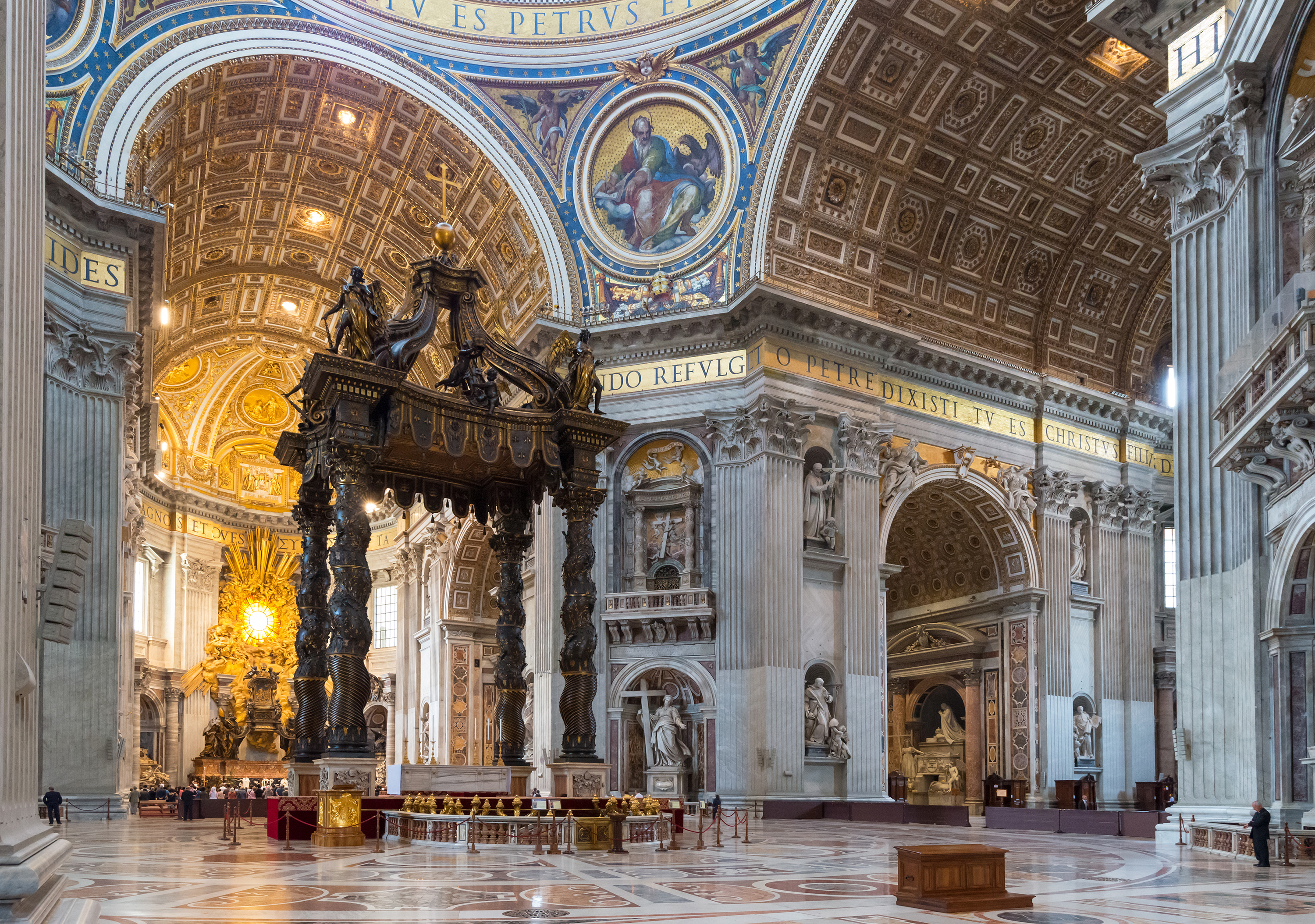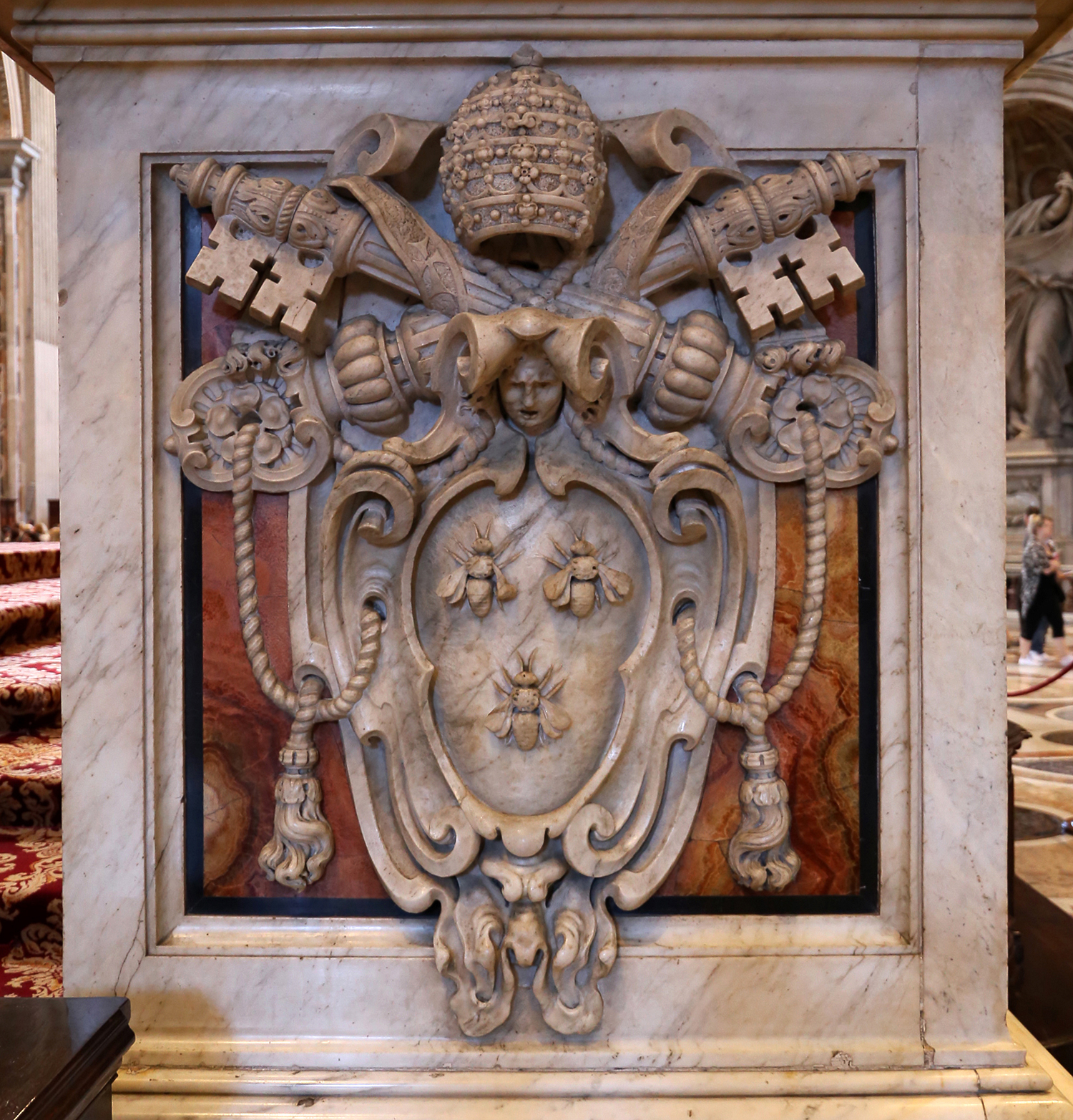The towering sculpture inside St. Peter’s Basilica is a like a book full of hidden meanings.
Lenten Campaign 2025
This content is free of charge, as are all our articles.
Support us with a donation that is tax-deductible and enable us to continue to reach millions of readers.
St. Peter’s Basilica in Vatican City is a must-see destination for tourists and religious travelers alike. Built atop the tomb of the Apostle Peter, it’s one of the largest churches in the world and it’s considered the greatest example of Renaissance art ever made on earth.
One of the defining works of Baroque sculpture within St. Peter’s is found above its main altar. Built in 1634 by Baroque master Gian Lorenzo Bernini, St. Peter’s Baldachin is a work of art like few others in Christian art history. Bernini adapted the textile elements of a papal baldachin (a canopy placed over an altar) to build a sumptuous bronze sculpture that recreates the effect of a baldachin on a gigantic level.
Part sculpture, part architectural edifice, the towering baldachin, measuring 94 feet, was erected to stress the importance of the pope as the intermediary between God and men. It effectively acts as a visual focus for those standing inside the basilica, looking towards the altar. Only the pope celebrates Mass at this altar, and the structure’s majestic columns frame him, adding a heightened sense of the sacredness of the event.
Many important churches feature something like a pavilion over their altars, a structure called “ciborium,” but in this case Bernini took the concept a step further. St. Peter’s Baldachin is in fact much taller than ordinary ciboria, and it comes with rich ornaments with strong symbolic meanings. Indeed, the whole structure can be considered a book full of hidden meanings. Here is a visual gallery to decode the symbols of Saint Peter’s Baldachin.
1. The world redeemed by Christianity
The towering helical columns, measuring 66 feet, support a structure on which we find two large statues of angels supporting a gilded cross on a sphere, a symbol of the world redeemed by Christianity.

2. Barberini emblems
One of the striking features of St. Peter’s Baldachin are the textile elements that usually come with regular baldachins, here recreated in bronze and gold. Indeed, from the cornice of the baldachin hangs a sculptured version of the tasseled border that normally hangs from papal baldachins. Bernini decorated it with bees and laurel leaves, the heraldic symbols of the Barberini family, to which Pope Urban VIII belonged.

3. The Holy Spirit
On the underside of the canopy, right above the place where the pope stands during ceremonies, we find a radiant sun, considered an emblem of the Barberinis as well as a symbol of the presence the of Holy Spirit.

4. The stages of childbirth
The four marble plinths at the basis of the helical columns are decorated with a series of eight nearly identical coats of arms. Together, they form a narrative that according to most art historians symbolizes the various stages of childbirth. Each coat of arms shows three bees, the symbol of the Barberini family. The bees are featured on a shield held by a woman, who looks different in each of the symbols. When looked at from left to right, the face of the woman in each of the eight shields changes dramatically until she “becomes” a winged child (putto) in the eighth shield. According to some art historians, Bernini used childbirth as a symbol of the labor of the papacy on earth.









